Graham Audio LS8/1 Speakers: A First Look Audition
by David Neice
Graham Audio LS8/1 Speakers MSRP: $13,360 CAN (US $9700) – the Derek Hughes Signature Edition is limited to 100 pairs and includes custom stands.
Lejonklou Boazu Integrated Amplifier MSRP: $5795 CAN.
Summary: This report is based on an ‘audition’ of the Graham Audio LS8/1 speakers done at Hearken Audio In Kitchener Ontario. Circumstances mentioned below prevented us from doing a full review so we thought a first listen might serve some purpose instead.
The LS8/1 speakers are that rare thing – a true monitor speaker which can be used as a reference standard. What this means is that after a short period of exposure you begin to trust these speakers to spell out the truth about the source material you are auditioning. This may not always be flattering to the source, but it is never the less essential.
However, the performance of the LS8/1s is also dependent on system components that make up the audio chain. In this regard the careful selection of components by Hearken Audio is right up there in that lofty category that I would refer to as ‘just about the best I have ever heard’. In particular the chosen amplifier, a Lejonklou Boazu integrated amplifier, is in my humble opinion, exceptional.
I can strongly recommend that you run, don’t walk, to Hearken Audio or to another Graham Audio dealer and have a listen.
Introduction
Previously I posted a brief summary on the Canuck Audio Mart forum about these speakers and this sound system. Now I am filing a more complete assessment from my audition, so if you have an interest then please read on.
At this price and quality level it is my belief that essentially I am hearing a ‘complete sound system’ which includes the room it is playing within. All the parts, which have been carefully selected for their synergies, can only reluctantly and fitfully be transferred to another venue. So, for our purposes my audition of this system ‘in situ’ is essentially a mini-review.
Hearken Audio
I visited Hearken Audio (info below) in Kitchener, Ontario on a Sunday in March and was graciously received by Matt Thomas. Matt operates one of the more interesting home-based audio salons in the country. His home salon is close to the Kitchener auditorium where the Kitchener-Waterloo symphony plays, and it reminds me of a former shop in Montreal called ‘Audiorama’ hosted by the then-reigning queen of Montreal audio, Yolande Roberge.
Matt is currently using the front living room area (it loads nicely) for demos. A lovely expanded kitchen and dining area, adjacent to the living room, was recently renovated and is also packed with audio equipment. He and his spouse are currently in the midst of a massive overhaul of their home and he plans to move all the gear eventually to a treated basement setting.
In a few years he will be retiring from his day job and plans to do the audio business full-time from then on. He has an extremely forgiving spouse whose tolerance for having audiophiles visiting her home is quite high. Evidently she must have a perfect WAF score. Lucky Matt!
My main mission at Hearken was to audition the LS8/1 speakers, but I quickly found that our perceptions of reproduced music matched closely, which naturally leads to my rather favourable acceptance of Matt’s opinions. I think we basically agree that the frontier of audio is the communication of musical emotion, and Matt searches for gear that satisfies this urge.
Graham Audio
Graham Audio is a UK-based firm located in a small town in Devon, England. The firm is founded and owned by Paul Graham and the chief designer of their speaker line-up is Derek Hughes, about whom more is found below. Their manufactured speakers include two versions of the LS3/5a, one of which is licensed, the well-regarded LS6 and LS5/9s, as well as several larger designs like the LS5/5 that are mostly aimed at studios.
From their website I quote: ‘Of all the different approaches (to speaker design), Paul has always favoured the “BBC sound” for both professional and personal applications, but feared that many of the classic designs would be lost forever as one by one the surviving examples gradually failed after many decades of operation’. The answer for Paul Graham was to build and sell some new BBC-influenced designs (such as the LS6) as well as newer licensed versions of existing designs like the LS3/5a.
This is a serious loudspeaker company that seeks to exert considerable influence on the wider professional audio community. All their designs adhere to the audio fundamentals discovered by the BBC research branch some fifty plus years ago. Graham Audio is swinging for the fence, by which I mean they are seeking to place on offer the very best loudspeakers available in the world at any price.
If you wish to investigate their speaker line-up, including rave reviews for several of their designs by literally dozens of reviewers then the Graham Audio website is found here. https://www.grahamaudio.co.uk/
The Speakers – An Introduction
The Graham Audio LS8/1s are patterned after the BBC designed LS3/6 speakers – which in turn are derived from the famous Spendor BC1s. The new LS8/1 design is a product heralding the culmination of life-long design work by Derek Hughes, which now surpasses the legacy of his father, Spencer, the founder of Spendor Audio Systems and the designer of the BC1.
The LS8/1s even look like BC1s, with a front ported enclosure that is about equal in dimensions and size (around 2 cubic feet). They are nominally a three way design with the addition of a super-tweeter and they follow the recipe of the BBC thin-wall design where the speaker is more or less a ‘musical instrument’. The speakers are moderately sensitive at 87 db, and further specifications are found below.
BBC engineers uncovered that they needed to treat the enclosure as a source of audible vibrations that affected the sound. This research led to several BBC designs that used heavily damped thin-wall speaker cabinets and to crossover frequencies that were quite high (3.5KHz plus) so that crossover effects were pushed out of the band that reproduces human voice as well as the fundamental tones of many musical instruments. This style of speaker development has now pretty much gone out of fashion, but Derek Hughes and Graham Audio still adhere to its core lessons, as does Alan Shaw at Harbeth.
Currently the LS8/1s are sold in the Derek Hughes Signature version in teak, which includes the custom tailored stands in a package price. The stands are designed to allow the bottom panel of the speakers to vibrate, as is required by thin-wall designs.
The Hearken System
Besides the LS8/1s, the overall system under audition consisted of several other excellent parts. The speakers were being driven by a Lejonklou amplifier (the integrated Boazu) an unusual and rare minimalist design in the solid state field. Matt claims, and I believe him, that it is one of the most ‘tube-like’ amplifiers on offer today. It seemed to me that the match with the LS8/1s was made in heaven. The Lejonklou website is here. https://www.lejonklou.com/
To help describe the remainder of the system, I will quote Matt Thomas at length about the setup he has fashioned.
‘We’re still playing with different combinations with the Grahams, but the Lejonklou gear is outstanding and it is indeed going to the Montreal show. Lejonklou will take care of the amplification with the Boazu integrated and the Lejonklou Kalla will have streamer/dac duties.
The Lejonklou Entity phono stage is another gem which is probably the best phono I’ve heard under $4K. The turntable is a Reference Jean Nantais with a Graham Phantom iii arm and a new cartridge brand I’m importing to Canada from Lithuania called the Aidas Mammoth. We top it all off with a brand called Yeti Acoustics that I’m also importing who offer incredible cables and power conditioning.
Finally, the Graham Audio speaker stands rest on Artesania Audio isolating pucks. These make a huge difference since they come with different inserts that are made of wood or elastomers which allow varying effects on the sound. The elastomer inserts sounded the best to my ears on the hardwood floors. All of these little things have added up to better sound. Truly the Graham LS8/1’s sing with this combo!’
The Listening Session
My listening session with the LS8/1 system was just prior to the Montreal Audio Fest and Matt was planning to take the speakers, the amp and other associated gear with him to Montreal. Audio shows are of course big expensive commitments for a retail dealer, and lots can go wrong. Matt was preparing to transport the system to Quebec within a couple of weeks of my visit, so it was not practical to ask to move the components to my home for a full review.
I took extensive notes after the session for this assessment. We worked our way through a selection of tracks on various CDs that I had brought, and Matt located all these tracks on a streaming service and we both listened intently. From time to time Matt selected some vinyl for our listening pleasure and it all seemed quite easy peasy.
The Sound
The auditioning room was nicely loaded by the speakers and I got the overall impression that this was about as good as it gets. It turns out the LS8/1s are truly outstanding and I was shocked at the quality of the system – certainly one of the best if not the best system I have ever heard.
For the money one would expect them to be ravishingly smooth and they are certainly that, but the biggest impression on me was the ‘body’ that they convey in vocals and their ‘shiver factor’. I found that the hairs on my arms and neck were frequently raised as the emotional content of the music was well conveyed.
As for our track selections, I will only highlight a few that illustrate my main points. We played tracks from Kate Melua’s album Piece by Piece. The opening track (Shy Boy) places Melua’s voice front and centre and on lesser speakers is full of sibilance. The Graham’s did not eliminate this sibilance and indeed they shouldn’t. Instead they rendered it to be a minor annoyance that did not blemish the overall vocal effects of Melua’s beautiful soprano.
A later track on the same album, On the Road Again, an old Canned Heat song, was full of rhythmic drive and propulsion from the moderate bass line as befits the song and the musical arrangement. Here the Grahams did their main business – which is to communicate the emotional effects of the song and performance. I was mesmerized.
Mae Moore and Lester Quitzau were no less stunning on the album Oh My. This was recorded on a four track analog tape machine in a cabin in Northern British Columbia and the sound is superb. These CD tracks have tremendous presence and this was well conveyed. Similarly, Eva Cassidy singing Tall Trees in Georgia on Live at Blues Alley had me in goose bumps, so real was the impression that Cassidy and her solo guitar were in the room with us.
In a like manner Rose Cousins version of Freedom on Natural Conclusions was full of body while highlighting Cousins female tenor voice. I was stunned. Mavis Staples gorgeous voice on the track Too Close/On My Way to Heaven on You Are Not Alone was also packed with vocal body, and her choral back-up singers were rendered in all their pristine glory. I have never heard Mavis sound better, and her butter soft approach to religious anthems is stunning. Bravo to Jeff Tweedy the producer for that work.
For a pop comparison, we put on tracks from Stevie Winwood’s album Back in the High Life Again. What the Grahams did with this material was almost laughable. The sound stage collapsed, the compression was audibly significant and the whole thing just sounded like an AM radio in the car.
Now this is the arresting thing about a true monitor speaker. It is not going to flatter the source material unless that material is up to the task. It is going to tell you exactly what is on the track you are listening to. At this very moment in the audition I realized how special the LS8/1s are as a tool to recreate the original sound field.
Jumping then to the Robert Plant and Alison Krauss album Raising Sand we were emotionally restored to find the production values to be exemplary. Some tracks, like Please Read the Letter are loaded with dense details and can sound compressed and congested on lesser speakers. The LS8/1s sailed through this obstacle course. Similarly, Alison Brown’s filigree banjo work and her excellent accompanying bluegrass musicians were portrayed in all their shining glory on the CD Stolen Moments.
Finally, I played one of my favourite tracks of Ann Peebles – the Bob Dylan song Tonight I’ll Be Spending Here With You found on a delightful religious/soul compilation I own called I Believe It To My Soul. Peebles voice was rich and detailed and shimmered in the mix, all propelled by the infectious organ work of Billy Preston.
In summary, the reader may get the impression that I am obesessed with the reproduction of voices, whether those are human voices or the voices of instruments, and I am. This all comes down to midrange perfection, and the LS8/1s live here.
Many many times I got the ‘shivers’, an emotional reaction to the communication of the purest music. All afternoon the shivers just kept coming. I left the audition drained but ecstatic.
Conclusion
The LS8/1s are excellent – a true monitor speaker that tells it like it is, with a strong shiver factor. Perhaps I am influenced too much by having owned the Spendor BC1s (for 45 years), but the LS8/1s are something quite special. Derek Hughes has now truly eclipsed the efforts of his father.
In closing I will paraphrase the words of Ralph West, who reviewed the Spendor BC1s fifty years ago for Hi-Fi News and Record Review and who offered this observation via typical British understatement. “The performance of these speakers has been achieved once or twice before and such performance is not limited to just speakers.”
Congratulations to Derek Hughes and Graham Audio! We, the audiophile community, all benefit from application of their genius and perseverance.
Specifications
Type: Three-driver, stand-mounted, bass-reflex box-speaker system
Driver complement: 200mm (SEAS) mid/bass, 25mm (SB) tweeter, 19mm (SEAS) tweeter
Crossover: 3.5kHz, 13kHz
Frequency response: 45Hz–20kHz, ±3dB
Nominal impedance: 8 ohms
Sensitivity: 87dB/2.83V/1m
Maximum output level: 100dB/pair/2m
Cabinet: Thin-wall birch plywood, damped
Dimensions: 11.8″ x 25″ x 11.8″
Weight: 37.5 lbs.
Hearken Audio
96 Filbert St.
Kitchener, Ontario
(519)-635-8354
Graham Audio
Ringsdale House
Ringsdale Road
Newton Abbott, Devon, TQ126PT U.K.
On a Higher Note (North American Distributor)
P.O. Box 698
San Juan Capistrano, CA 92693
(949) 544-1990

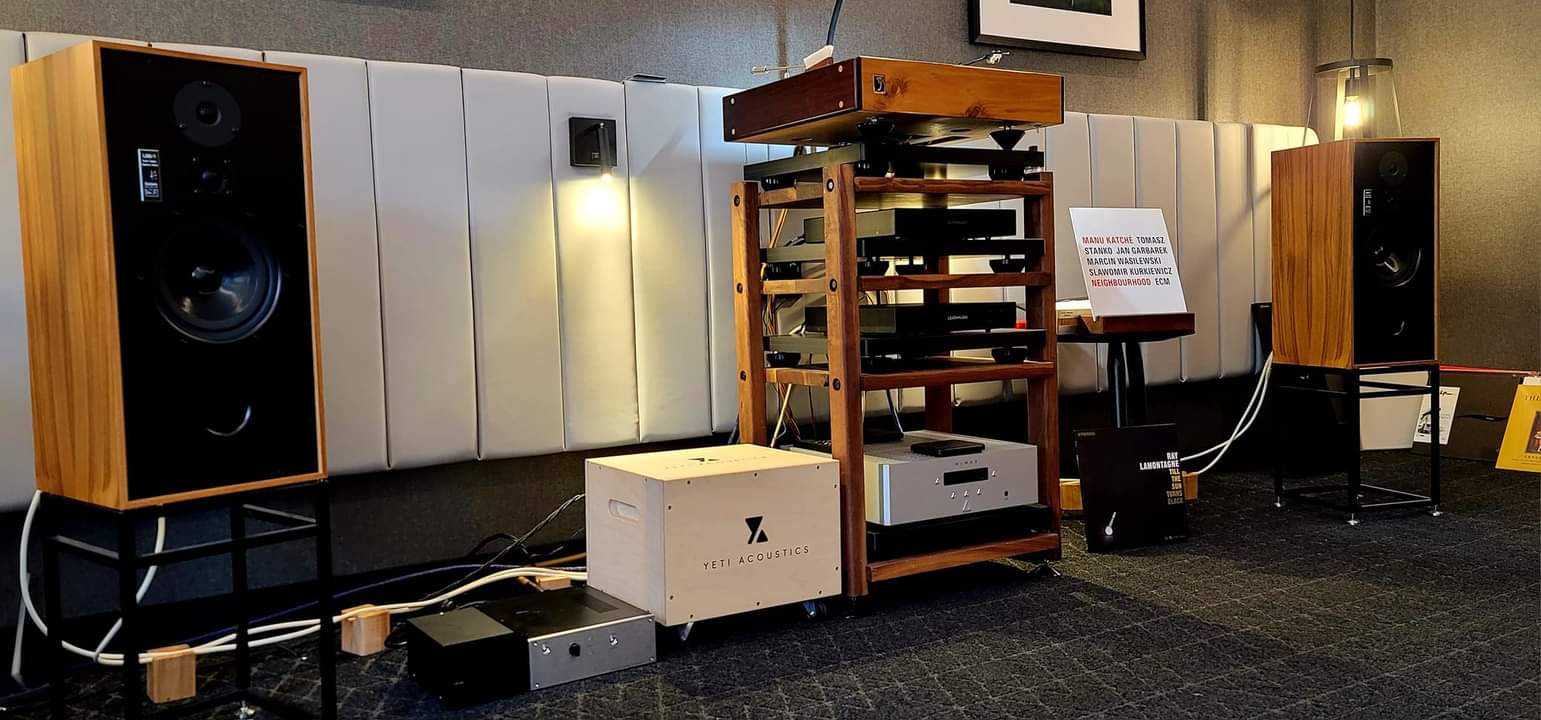
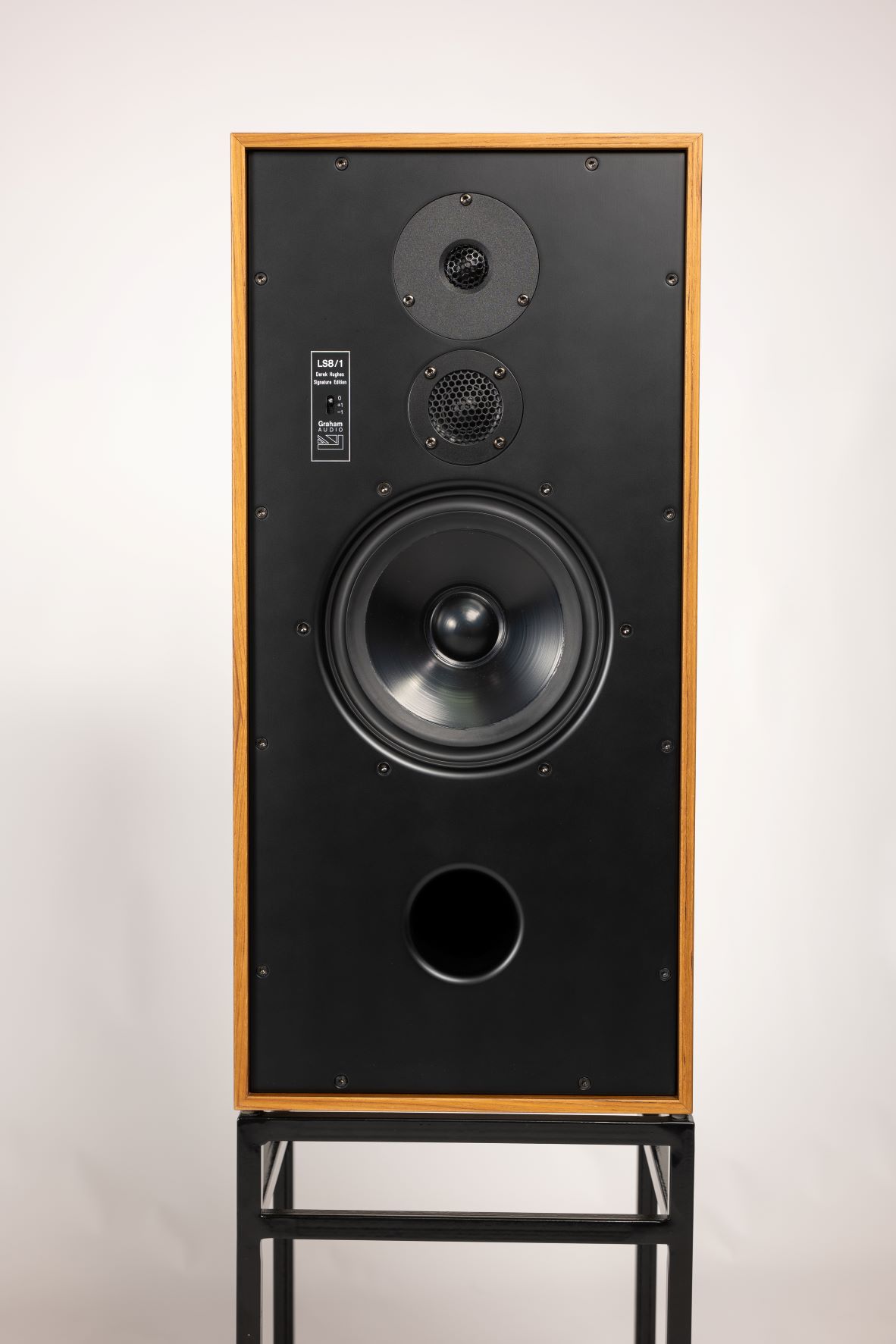
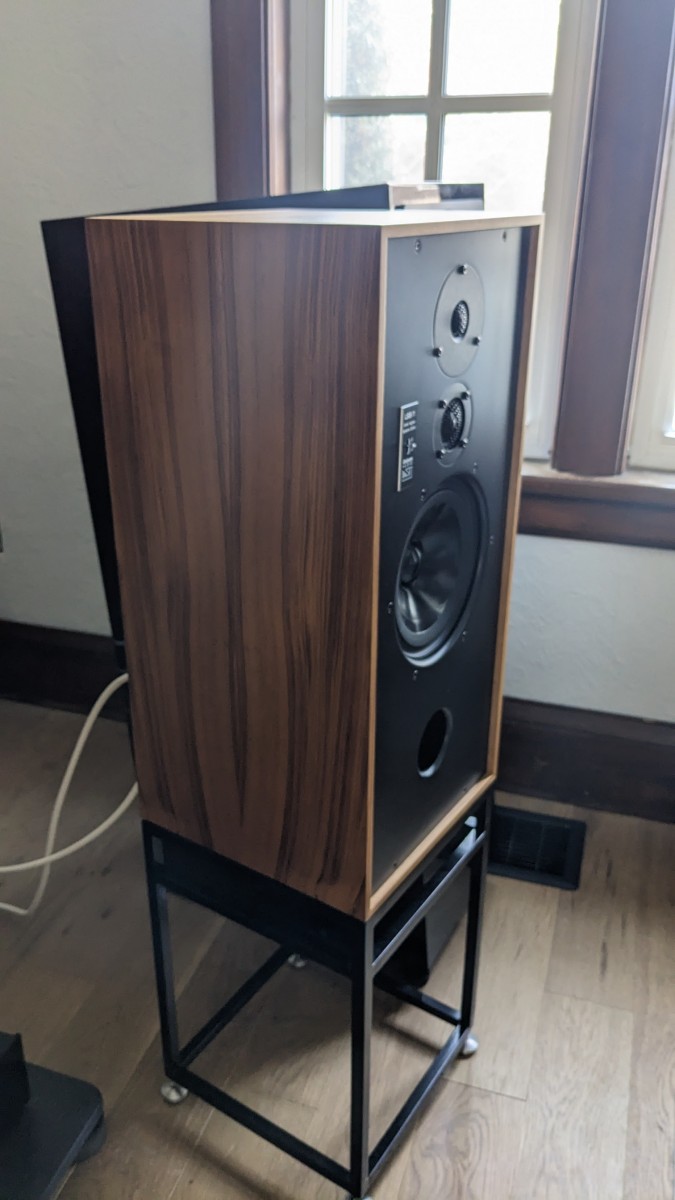
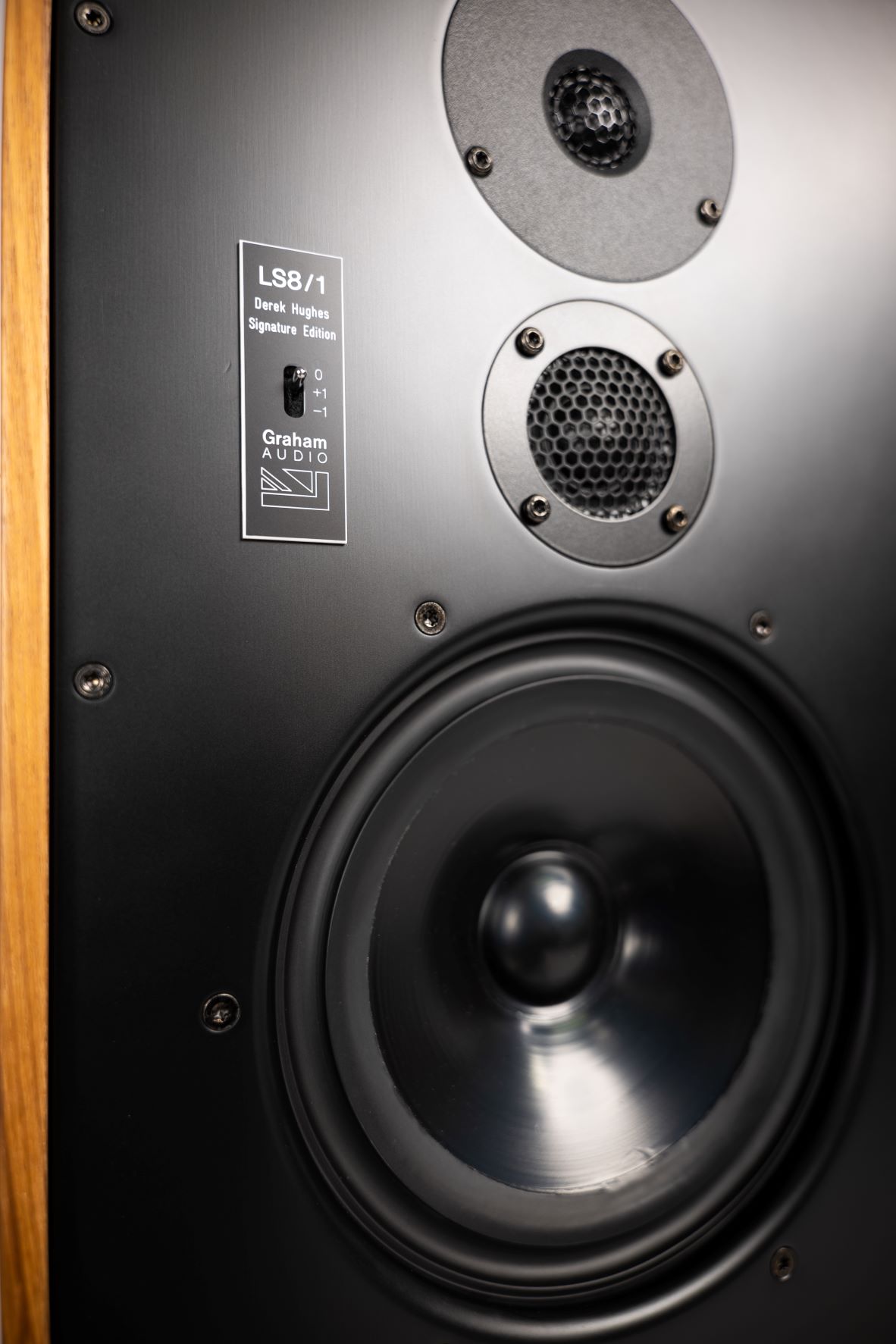
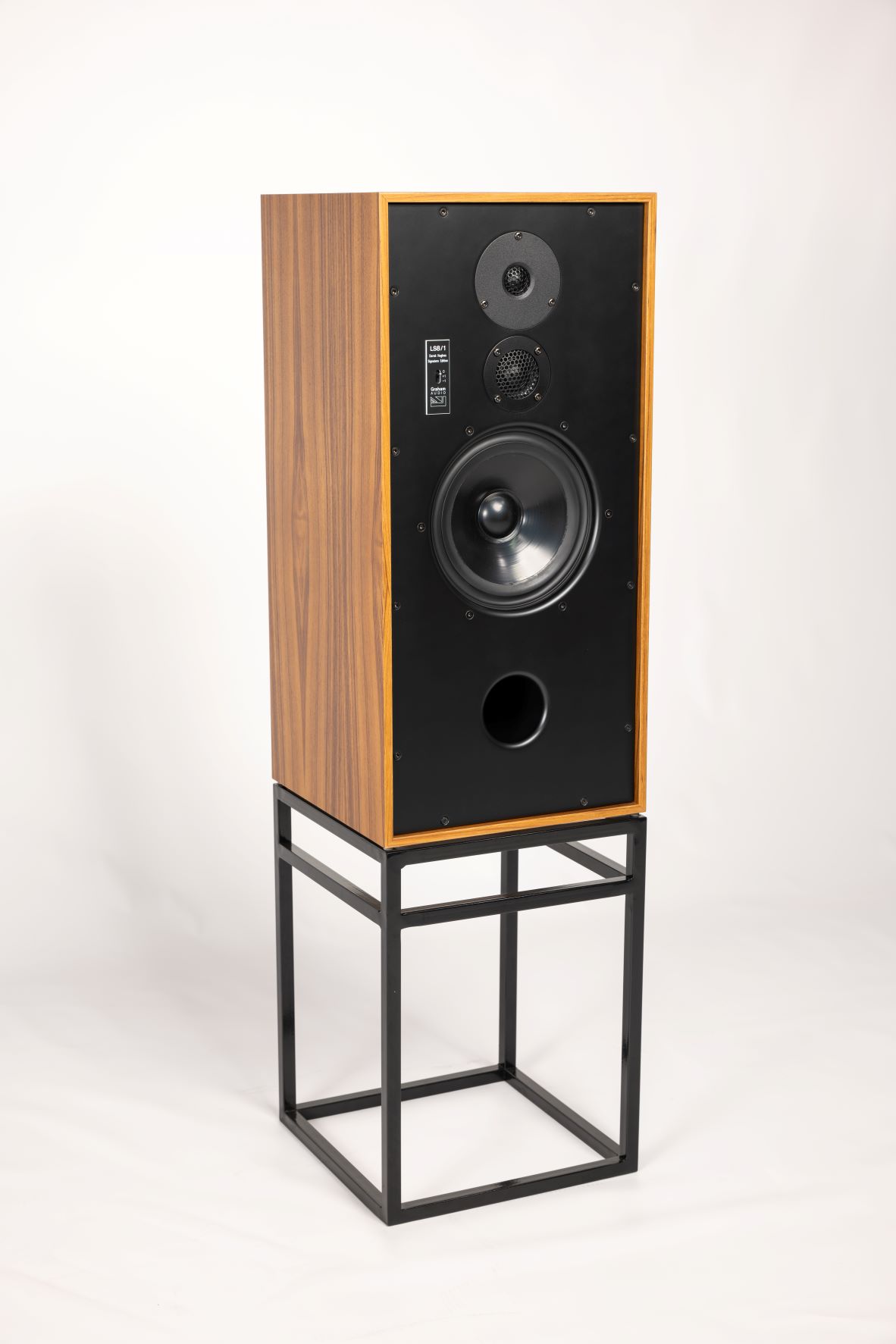
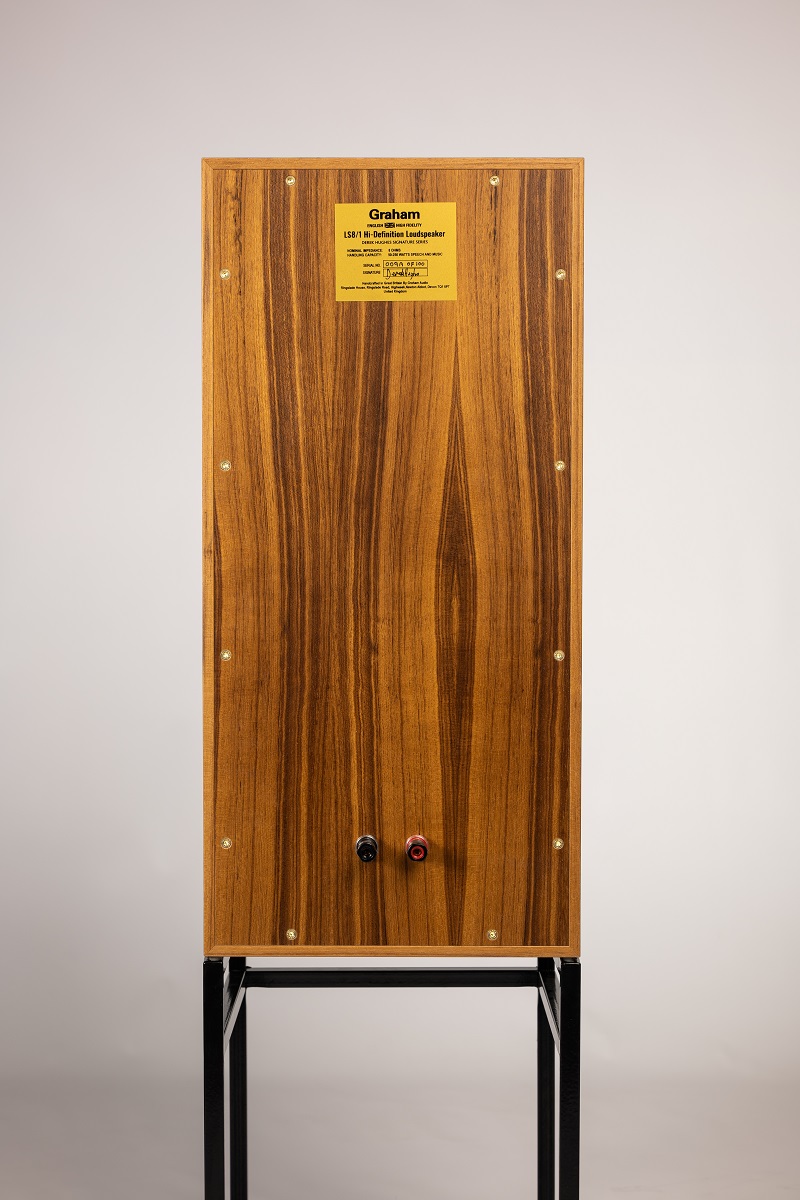
I want to thank David and the rest of the gang at Wall of Sound. This review is outstanding and we are ecstatic about sharing this wonderful system. Your straight forward and kind words will not be forgotten.
Best,
Matt Thomas
Hearken Audio
As a user and reviewer of a few Graham models,for “The Sound Advocate ( https://www.thesoundadvocate.com ) I would have liked a more in depth review of the sound itself as compared to the BC1 . However, something is always better than nothing!!
Hi Howard,
Excellent point. Unfortunately my pair of BC1s expired last year. The leads into the mid-woofers finally just disintegrated. So any direct comparisons by me were not possible. Perhaps you could do that in future at Sound Advocate.
But this is why, in my view, it is so important to find BC1 replacements amongst the current crop. So far the Graham LS8/1s and the Stirling LS3/6 speakers are pretty much the only candidates. This is a bit sad really. Exposure to that BC1 magic is being lost daily and there are few alternatives although the LS3/5a lives on.
Cheers,
David Neice
Very nice piece, David. I read it twice. Great job!
Note to Robert,
Thanks for the positive comments.
Cheers,
David Neice
I’ve owned my Sterling Broadcast LS3/6 for about 6 years and I still love them. About 2-1/2 years ago I bought Klipsch Cornwall IV speakers not to replace the LS3/6 but to rotate them in occasionally as a complementary change of pace. I’ve switched between the 2 speakers several times but the last time I realized how much more I like the LS3/6. The Cornwalls are very good and a fun change of pace but LS3/6 has that magical midrange that the CW can’t match. I use a REL S5 subwoofer with the CW and LS3/6 (of course with different settings for each speaker). The REL sub definitely improves the SQ of both speakers and not just in the bass but imaging and soundstaging as well. I wonder how LS3/6 compares to the 8/1. Any thoughts?
I have these wonderful speakers fed by a Leben CS600x and a Vertere MG1/Mystic and I was shocked when I tried to play Steve Winwood’s album. The compression made the album unbearable to listen to. I have my pair supported on stands with Townshend’s superb speaker isolating seismic supports. I also use Townshend Isolda speaker cable and their super tweeters. All brought something to the party. I became a little obsessive about isolation, vibration etc and have Townshend’s seismic supports under the turntable and the amp. Next will be my Trilogy 907 phono stage.
It’s all good fun
Peter
UK